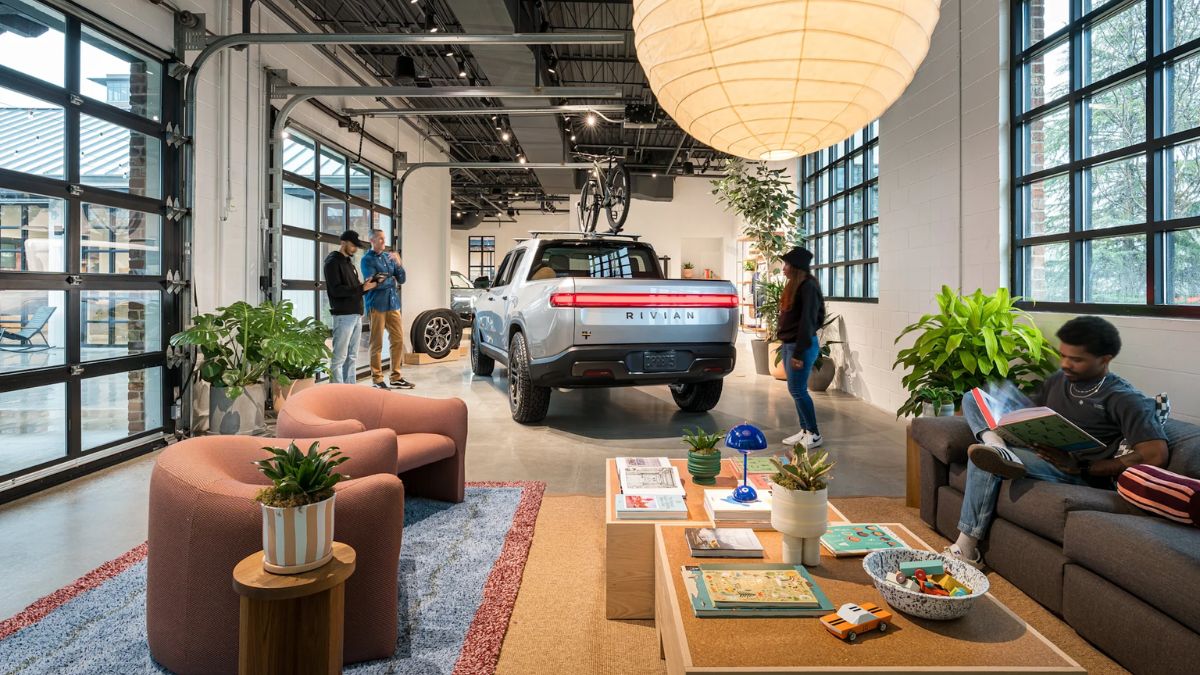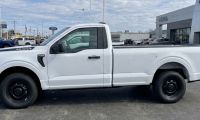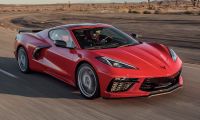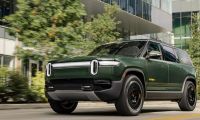Charging speeds matter. Ask any EV driver who’s stood at a charger, checking their watch, hoping their car hits the advertised charging rate. It’s exciting when your EV delivers those super-fast charging speeds, but frustrating when it doesn’t. That's exactly why a recent Facebook post from a driver named Levi caught my attention.
I was scrolling through the "RIVIAN Electric Vehicles Discussion" group when Levi posted an honest question about Rivian charging speeds. He's currently driving a Blazer EV but is seriously thinking about trading it in for a Rivian R1T. Levi shared: “What real-world peak charge rates have people seen? I'm waiting to get out of my Blazer EV to get an R1T, and my Blazer at a 350 kW charger never got over 200, so I wanted to see if it's the same story with Rivian or if it's more accurate.”
Levi’s frustration with his Blazer is understandable. When an automaker promises charging speeds up to 350 kW, falling significantly short in reality can dampen your EV experience. I wanted to find out how Rivian actually stacks up, so I checked the comments under Levi’s post and dove into some conversations to see what real Rivian owners were saying.
What Rivian Owners Are Actually Seeing at Chargers
Right away, a Rivian owner named Mike jumped into the conversation and said something interesting: “I've seen 220 kW, but remember the Rivian has a bigger pack than the Blazer, so I'm going to guess they'll be about the same time to charge.”
Mike’s point is important. Peak charging speeds matter, but the total charging time also depends on battery size. Rivian’s battery is bigger than the Blazer’s, meaning even similar peak speeds can result in different overall charging experiences.
Peter, another Rivian driver, added more clarity by sharing his personal experience: “The highest I’ve seen is 219 kW on my 2023 R1S; I’ve achieved it at EA and RAN chargers.”
Peter’s real-world peak of 219 kW is very close to Rivian’s advertised rates, which shows Rivian is delivering realistically on their promises. This matches up well with Rivian’s official numbers, giving Levi and other potential Rivian buyers a good reason to feel optimistic.

Why Real-World Charging Speeds Are Important
Real-world charging isn’t just about the peak speed your EV can hit briefly, it's about how well your car maintains that speed over the charging session. Consistency matters. In my experience covering EV ownership stories, I’ve found Rivian owners generally praising their charging experience, especially at Electrify America (EA) and the Rivian Adventure Network (RAN) stations.
In fact, one Rivian owner recently shared an insightful story about successfully completing a long-distance trip using commercial chargers. Their experience highlighted the ease and reliability Rivian owners enjoy, especially compared to some other brands. This kind of consistency makes owning a Rivian reassuring and stress-free on road trips.
Rivian’s Strong Charging Network
One standout advantage Rivian has over many competitors is its dedicated Rivian Adventure Network (RAN). Because Rivian built these chargers specifically for their own vehicles, they work seamlessly, optimizing charging speed and reliability.
Owners frequently praise this network for providing a hassle-free charging experience. This isn’t just marketing; it's backed by actual user experiences and stories. For example, one Rivian owner talked about how his R1T handled a 10-mile autonomous drive through mountain passes, showcasing just how advanced Rivian’s tech is.
A Step Up from the Blazer EV
Levi’s frustration with his Blazer EV’s charging limitations isn't unique, several drivers have reported similar experiences. While Chevrolet advertises fast charging speeds, real-world conditions like temperature, battery health, and charger availability often result in lower rates.
Rivian, on the other hand, seems to deliver real-world charging speeds consistently closer to their advertised numbers. Hitting peaks of around 215-220 kW isn’t just possible, it's common, making Rivian’s claims much more trustworthy in everyday driving situations.
Positive Experiences Make the Difference
Of course, like any new technology, Rivian vehicles sometimes encounter small hiccups. One owner recently encountered a minor issue when their R1T briefly showed a 12V battery warning. But even in cases like these, Rivian’s customer support and quick resolution often leave drivers with a positive impression.
In fact, many Rivian owners share uplifting experiences about how their trucks have added convenience and enjoyment to their lives, like one owner whose gear tunnel powered a hot meal during an unexpected situation. These stories highlight the thoughtful features Rivian builds into its vehicles.
A Good Lesson for EV Buyers: Real-World Performance Matters Most
If Levi’s situation teaches anything, it's the value of checking real-world experiences before making a decision based solely on advertised specs. With Rivian, the good news is that their vehicles generally meet, and sometimes even exceed, those real-world expectations. Their strong charging network, consistent charging speeds, and unique features all add up to a genuinely satisfying ownership experience.
Let's Hear from You!
Now that you’ve read what other Rivian owners think, I want to hear from you:
-
Have your EV’s charging speeds matched your expectations, or did you have similar experiences to Levi?
-
If you already own a Rivian, how often have you experienced peak charging speeds above 210 kW, and how has that impacted your satisfaction with the vehicle?
Share your stories in the comments below.
Narek Hareyan is a young automotive journalist with experience in a golf cart dealership and an interest in the automotive industry. Follow Narek on X for daily news coverage about cars.
Image source: Rivian Press Room












Comments
Those speeds need to be…
Permalink
Those speeds need to be about 10 to 20 times faster before I give up my gas truck. I have 600 mile range and 5 minute recharge.
The Blazer EV has 2 peak…
Permalink
The Blazer EV has 2 peak charging speeds; depending on model. The fastest model is 190 kW. This is right on the window sticker. Why buy a vehicle that can charge at 190 and expect it to charge at more than 200? If DC fast charging speed is important to your purchase decision a little research will help with what vehicles are best.
For many EV drivers DC fast charging speeds not a priority if you can charge at home or work. Charging at a DC charger is so rare it is a non-factor.
So really the brunt of the…
Permalink
In reply to The Blazer EV has 2 peak… by Jason (not verified)
So really the brunt of the article should be how people can complain about something not working when the problem is Levi can't read.
Not sure that Rivian is the…
Permalink
Not sure that Rivian is the answer 🤔.
This article lacks a lot of…
Permalink
This article lacks a lot of context. Of course the blazer EV didn't go above 200. It's rated either for 190 or 150 depending on your equipment package.
Another important metric is…
Permalink
Another important metric is efficiency. I believe the Blazer has a higher efficiency (mi/kWh) than the R1T so, given a certain number of miles driven per day, more kWhs will need to be charged into the R1T. Even if it charges a little faster, the R1T may spend more time charging per day
Where did he get that 350kw…
Permalink
Where did he get that 350kw number? 2025 Blazer charges at 190kw and a 2024 is slightly lower.
More often than not, the…
Permalink
More often than not, the charging station is more of a problem than the car. I have on many occasions seen chargers advertising blazing charge speeds just to be barely faster than my level 2 home charger.